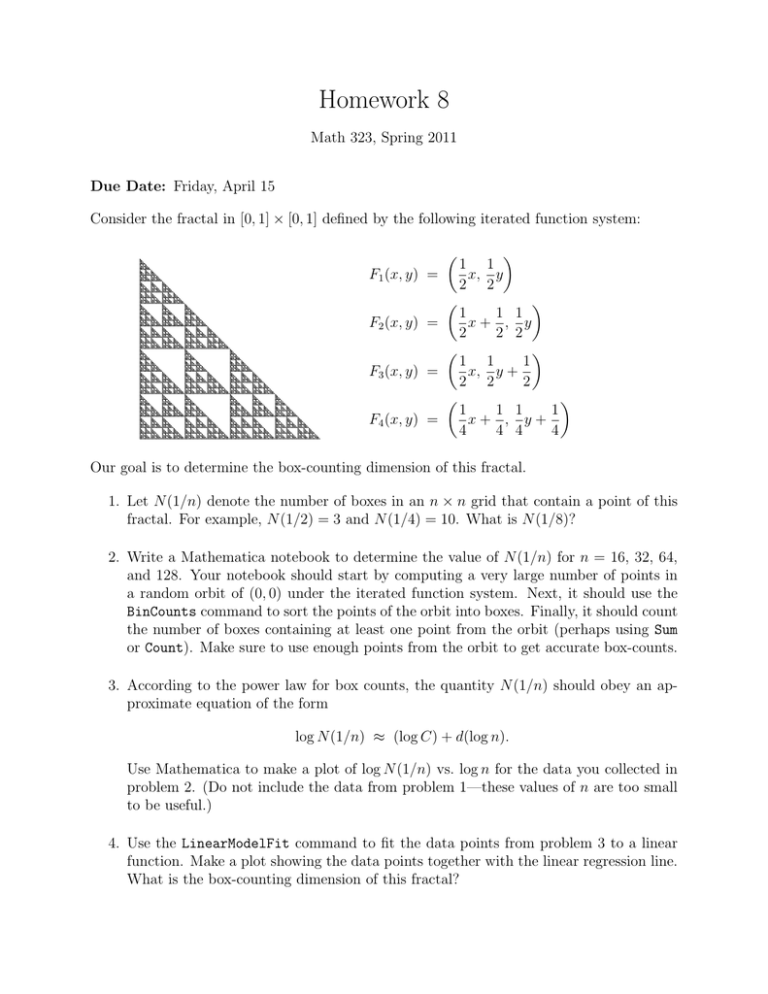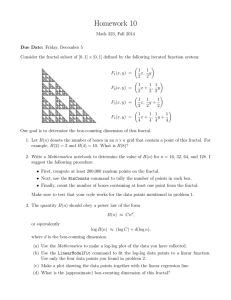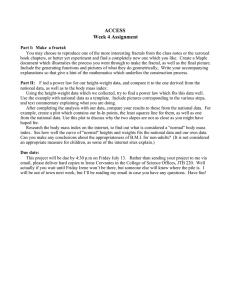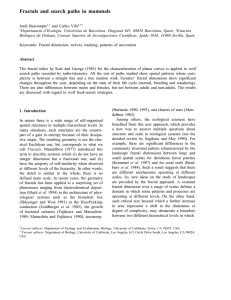Homework 8
advertisement

Homework 8 Math 323, Spring 2011 Due Date: Friday, April 15 Consider the fractal in [0, 1] × [0, 1] defined by the following iterated function system: 1 1 x, y 2 2 1 1 1 x+ , y 2 2 2 1 1 1 x, y + 2 2 2 1 1 1 1 x+ , y+ 4 4 4 4 F1 (x, y) = F2 (x, y) = F3 (x, y) = F4 (x, y) = Our goal is to determine the box-counting dimension of this fractal. 1. Let N (1/n) denote the number of boxes in an n × n grid that contain a point of this fractal. For example, N (1/2) = 3 and N (1/4) = 10. What is N (1/8)? 2. Write a Mathematica notebook to determine the value of N (1/n) for n = 16, 32, 64, and 128. Your notebook should start by computing a very large number of points in a random orbit of (0, 0) under the iterated function system. Next, it should use the BinCounts command to sort the points of the orbit into boxes. Finally, it should count the number of boxes containing at least one point from the orbit (perhaps using Sum or Count). Make sure to use enough points from the orbit to get accurate box-counts. 3. According to the power law for box counts, the quantity N (1/n) should obey an approximate equation of the form log N (1/n) ≈ (log C) + d(log n). Use Mathematica to make a plot of log N (1/n) vs. log n for the data you collected in problem 2. (Do not include the data from problem 1—these values of n are too small to be useful.) 4. Use the LinearModelFit command to fit the data points from problem 3 to a linear function. Make a plot showing the data points together with the linear regression line. What is the box-counting dimension of this fractal?





